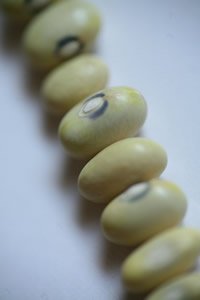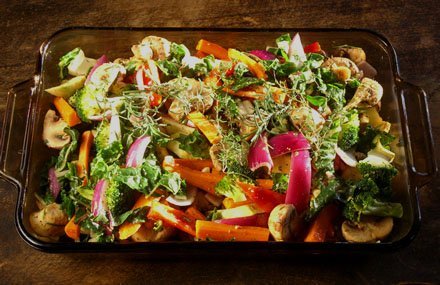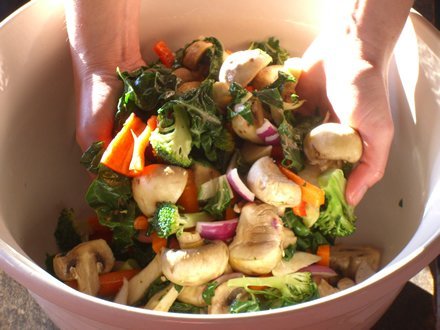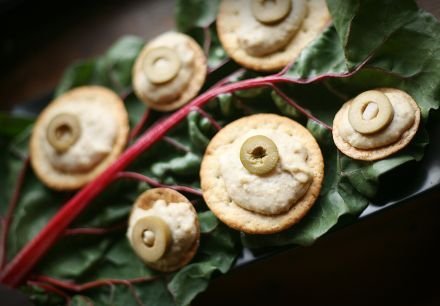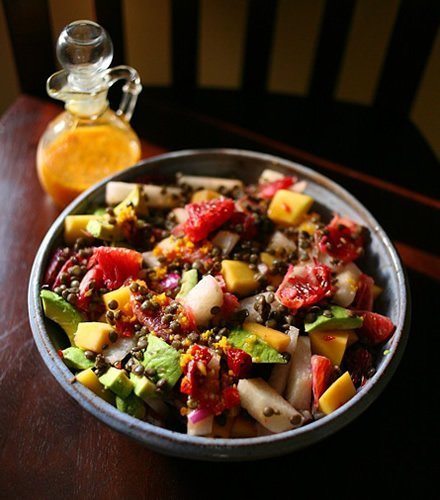
(Vegetarian, Vegan, Gluten-free)
On the Myers-Briggs personality test, I come out as an INF P/J. That is, introverted (but I prefer to call it internally-focused), intuitive, and feeling, with an almost even split on perceiving/judging. If you consider the first three typologies – self-navigated, intuitive/interpretive (and dare I say creative?), and emotionally flowing – well, just try to picture me cooking by the book.
It’s challenging enough for me to remember to measure and document how much of what I’m putting into each recipe I post. I could size up a serving and estimate – pretty accurately, too – the nutritional content of just about anything on a plate. But if you ask me to prove it – and show my work – well, we’ve got trouble.
As I do with every recipe for this site, for the Winter Celebration salad I painstakingly measured, weighed, sifted, leveled, fluffed and separated as appropriate, and wrote it all down in exacting increments. Imagine my distress when after all that, I lost it. The piece of paper that I’d been scribbling on went out with the recycling.
This blogging stuff is hard work!
As it turns out, I was happy to make and eat this dish again, and since it’s a salad it’s hard to get the proportions too wrong. The main challenge was the dressing. So I got to be intuitive here and you still get a recipe – it’s win win. And if the original recipe finally shows up, I’ll correct for any egregious mis-directions.
This salad is a true celebration of winter’s fruits. Mostly I made it because it was visually stunning, and I was thrilled when it tasted beautiful too. I’m crazy for blood oranges, which are too briefly in season. I can’t get enough of their vibrant purple-red flesh and their slightly berried flavor, so I knew I had to use them in a recipe while they were around. In this salad I’ve combined them with avocado, red onion, jicama (pronounced heek-uh-ma, also known as the Mexican potato), and mango (technically not a winter fruit, I know). This week’s heirloom bean is not a bean proper, but it is a legume — the French Green Lentil.
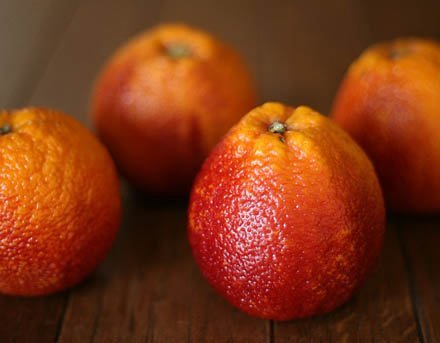
Like beans, lentils are their own branch of the legume family (Lens culinaris). They’ve been around since the Bronze Age, and almost all of them have the traditional earthy flavor and the appearance of a closed eye (hence the Lens in the Latin name, maybe? I’ll have to look that up). French Green lentils are an heirloom that I got from Victory Seeds. Technically they sell them for planting, but they sell a 3-ounce pack, and that’s plenty for a salad.
Described by Victory Seeds as a “very rare heirloom”, French Green lentils are a mottled olive color, with yellowish and almost black splotches. They have the traditional earthy lentil flavor, but the finish is almost peppery.
The Recipe:
Winter Celebration Salad
Ingredients
3 blood oranges, peeled and cut into pieces
1 jicama, peeled and diced
1 avocado, sliced
1 small red onion, diced
1 mango, cubed
2 cups cooked French Green Lentils (this is a lot of lentils for a salad but I didn’t want to waste any of them – you might want to use less)
¼ cup fresh cilantro, chopped, plus sprigs for garnish
¼ cup fresh parsley, chopped, plus garnish
Dressing:
Juice of one orange
Juice of 1 lime
4 tablespoons extra virgin olive oil
1 tablespoon white wine vinegar
1 teaspoon chipotle pepper, in adobo sauce (or you can use dried)
Salt and pepper to taste
The beauty of this dish is that there’s not a bit of cooking. Just chop ingredients and combine. Mix the dressing ingredients in a bottle or jar and shake well, and add to salad (but since I winged it on this dressing, you better use your eyes as a judge to determine how much is enough. You don’t want to saturate the salad). Toss salad to lightly coat everything.
This salad is vibrant – the crisp-pearlike jicama, the fruity mango, the acidic but sweet oranges. The creaminess and the (monounsaturated) fat content of the avocado emulsifies and smoothes the flavors, and mellows the (very, very slight) heat that the chipotle lends the dressing. Enjoy!


